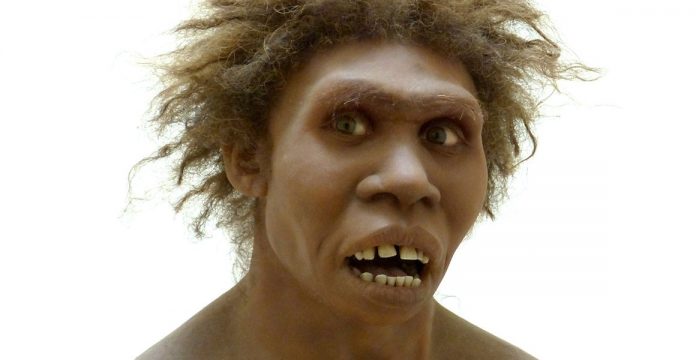New study on Turkana Boy, the most complete fossil skeleton of a human ancestor ever found, is changing our understanding of the species Homo erectus.
A new study led by paleoanthropologists in Spain reveals what the ribcage of a Homo erectus skeleton known as Turkana Boy looked like.
Homo erectus was the first of our relatives to have human-like body proportions. It was also the first known hominin to migrate out of Africa, and possibly the first to cook food.
Turkana Boy is a near-complete skeleton of an adolescent Homo erectus. It is approximately 1.5 million years old and was discovered in Kenya.
A 3D virtual ribcage of the skeleton has been reconstructed, allowing researchers to predict its shape and breathing pattern, had the boy grown into an adult.
Scientists found that Homo erectus had a large but short ribcage like Neanderthals, rather than the longer, flatter chest of modern humans.
H. erectus seemed to have had a stocky body shape, despite being considered the first long distance runner among our ancestors.
The ribcages of modern humans (left), Turkana Boy (middle) and Neanderthal (right). The ribcage of the Turkana Boy (Homo erectus) is deeper, wider and shorter than seen in modern humans, with similarities to the ribcage of Neanderthals. Licence: CC-BY-NC-ND 4.0, image by Markus Bastir.
Prof Fred Spoor, Calleva Research Leader in Human Evolution at the Museum and the study’s senior author says, ‘It appears that the fully modern human body shape evolved more recently than previously thought, rather than as early as two million years ago when H. erectus first emerged.’
The evolution of modern human body shape is important to understanding how we and our ancestors are adapted to our natural environment. As modern humans, Homo sapiens, we have a relatively tall, slender body shape that contrasts with, for example, the shorter, stocky, heavy-bodied Neanderthals.
Scientists have long assumed that our body shape originated with the first representatives of H. erectus in the context of climate changes and the receding forests in tropical Africa, over two million years ago. Our tall and slender bodies seem evolutionarily advantageous in the expanding hot and dry savannah, helping to avoid overheating and well-suited to bipedal running over long distances in more open terrain.
Fossils attributed to H. erectus point to longer legs and shorter arms than our earlier ancestors, the australopiths, which were bipeds when on the ground, but still retained some commitment to life in the trees. Several modern body characteristics are particularly clear in the 1.5-million-year-old Turkana Boy.
Studies of how Turkana Boy walked and ran have largely been restricted to the skeleton’s legs and pelvis, although knowing about the breathing capabilities would have also been relevant. This had not been investigated in any detail, because assessing the chest and breathing motion based on a jumble of rib and vertebra fossils is difficult with conventional methods. Now, with increasingly sophisticated imaging and reconstruction techniques, this study has become possible.
In the latest study, Turkana Boy’s adult shape (had he grown up) was predicted. The ribcage shape was compared with that of modern humans and a Neanderthal, and virtual animation allowed breathing motion to be investigated.
‘Its thorax was much wider and more voluminous than that of most people living today,’ says Daniel García Martínez, one of the paper’s authors based at the National Center for Research on Human Evolution in Spain.
‘Actually, the ribcage of H. erectus seems more like that of more stocky human relatives such as Neanderthals, who would have inherited that shape from H. erectus.
‘Our own body shape, with its flat, tall chest and narrow pelvis and ribcage, likely appeared only recently in human evolution with our species, Homo sapiens,’ adds co-author Dr Scott Williams, Associate Professor at New York University.
The paper speculates that these changes to our body shape may have optimised breathing capabilities for long-distance running and other endurance activities.
Fred adds, ‘That H. erectus was perhaps not the lean, athletic long-distance runner we imagined is consistent with more recent fossil finds and larger body weight estimates than previously obtained.; Tthis iconic ancestor was probably a little less like us than we portrayed over the years.’















